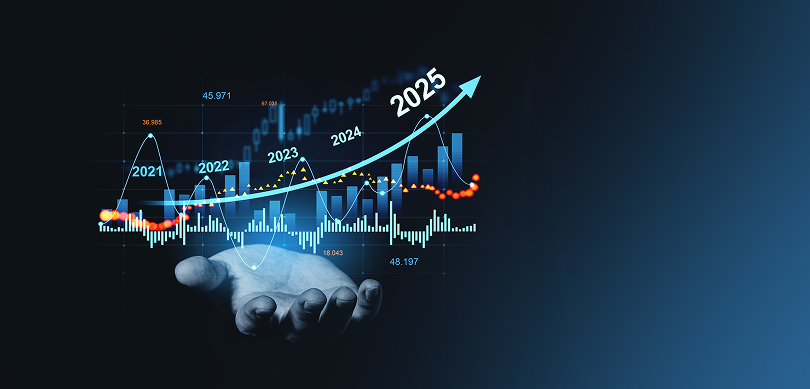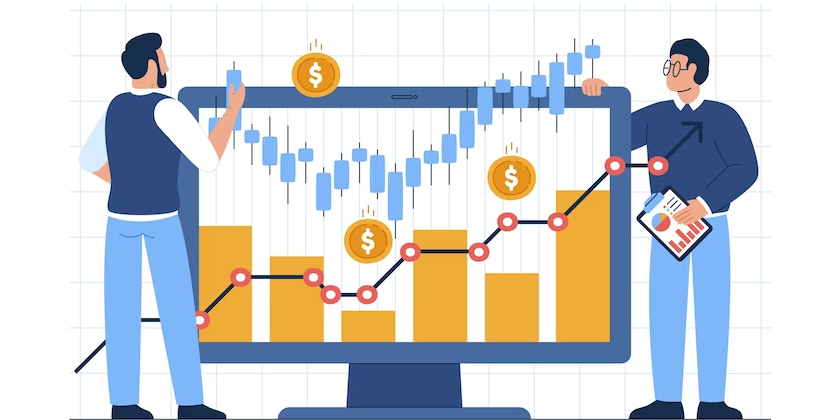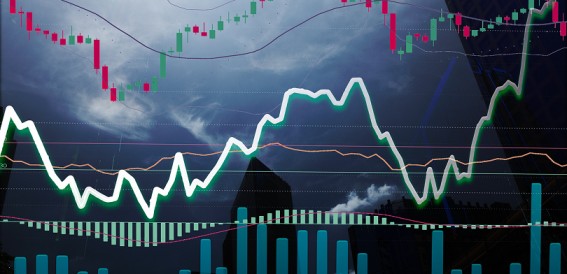- Last Updated: Jan 16,2024 |
- Religare Broking
Trading & Investing are two different approaches to participate in capital markets. While trading refers to short term buying & selling positions for a day, weeks or a month, investing is holding your position for long term wealth creation for future goals. Traders and investors are thus two different types of market participants, where traders mostly are capping on short term market volatility for profits, while investors are seeking long term investment plan with balanced returns. Let’s deep dive and understand the differences between the two and know which one is the right strategy for you.
- What is Trading? and there types
- What is Investing?
- Key Differences between Trading and Investing
- Choosing Between Trading and Investing
- Best Practices for Trading and Investing
- Common Misconceptions about Trading and Investing
- Advantages & disadvantages of Trading
- Advantages & disadvantages of Investing
- Conclusion
Topics Covered
What is Trading? and there types
Trading involves actively buying and selling financial instruments with the goal of making short-term profits. Traders basically intend to capitalize on price movements by taking positions based on market trends, news, technical indicators etc.
Types of Trading-
Traders employ different types of trading strategies basis their goals, timeframes, and risk tolerance.
Day Trading
Day traders typically close out all their positions the same day, before the market closes to avoid overnight risks.
Swing Trading
Swing traders hold positions for a few days to several weeks, aiming to capture larger price movements.
Position Trading
Position traders hold positions for an extended period, ranging from weeks to years.
Scalping
Scalpers execute several trades within seconds or minutes and rely on high liquidity and small price movements.
Options Trading
Options trading involves trading contracts that give traders the right (but not the obligation) to buy or sell an asset at a specific price (strike price) within a specified timeframe.
Forex Trading
Forex, short for foreign exchange, involves trading currencies in the global marketplace.
What is Investing?
Investing involves allocating your funds to various financial instruments with goal of generating long-term returns. Unlike traders, investors focus on long-term wealth accumulation rather than short-term price movements at the bourses. It requires careful consideration of personal goals, risk tolerance, and time horizons for building an investment portfolio. Thus, successful investing requires patience, diversification, and a disciplined approach to managing investments.
Some of the popular investment styles are stock market investing, bond investing, real estate investing, mutual fund investing, and index fund investing. All these classifications are based on the chosen instruments.
Key Differences between Trading and Investing
Trading and investing are distinct approaches to financial markets, differing in time horizon, risk, return potential, level of involvement, and investment strategy.
Time Horizon
Trading focuses on short-term price movements, with positions typically held for days, hours, or even minutes. Investing, on the other hand, takes a long-term perspective, with positions held for months, years, or even decades.
Risk
Trading tends to involve higher risks due to the shorter timeframes and greater exposure to market volatility. Investing, with a longer time horizon, allows for a more balanced risk profile and the potential to weather short-term fluctuations.
Return Potential
Trading offers the potential for quick profits by capitalizing on short-term price movements. Investing aims for long-term growth, with returns derived from factors such as capital appreciation, dividends, or interest income.
Level of Involvement
online Trading requires active involvement, constant monitoring of positions, and frequent decision-making. It demands a significant time commitment. Investing, on the other hand, is more passive, requiring periodic monitoring, portfolio rebalancing, and adjustments based on changing market conditions.
Investment Strategy
Trading strategies often revolve around technical analysis, market timing, and short-term price patterns. Investing strategies focus on fundamental analysis, evaluating the underlying value of assets, and selecting investments based on long-term growth prospects.
Recommended Read Introduction to derivatives trading strategies tips
Choosing Between Trading and Investing
When choosing between trading and investing, several factors should be considered.
Firstly, the time commitment and desired level of involvement are crucial. Trading requires active monitoring, analysis, and decision-making, while investing is more passive with a focus on long-term growth.
Secondly, risk tolerance plays a role. Trading often carries higher risks due to short-term volatility, whereas investing can provide more stability over the long term.
Additionally, financial goals and available resources should be evaluated.
Trading may offer quick profits but requires substantial capital and expertise, while investing is suitable for those who seek steady wealth accumulation.
Finding the right balance between trading and investing depends on personal preferences, risk appetite, and financial objectives. It's prudent to consult a financial advisor prior making a choice between trading & investing strategy.
Best Practices for Trading and Investing
When engaging in trading and investing, it is important to follow the best practices to maximize potential outcomes. Do thorough research before making any investment decisions. Understand the fundamentals of the assets or markets you are considering. Diversify your portfolio by investing in different asset classes to spread risk. This can help mitigate losses in case of a downturn in a specific sector. Manage risk by setting stop-loss orders or implementing risk management strategies to protect your capital. Last but not the least, set realistic expectations and avoid chasing quick gains or getting swayed by market hype.
Patience, discipline, and a long-term perspective are keys to successful trading and investing.
Common Misconceptions about Trading and Investing
There are common misconceptions surrounding trading and investing that can hinder potential participants.
Firstly, the belief that a significant amount of money is required to start is false. While having more capital can provide greater flexibility, there are various investment options available for individuals with different budget sizes.
Secondly, it is not true that trading and investing are only for the wealthy. With easy access to online platforms and fractional shares, anyone can participate, regardless of their income level.
Lastly, while expertise can be advantageous, it is not a prerequisite for success. Basic knowledge, continuous learning, and prudent decision-making can go a long way in achieving favorable outcomes in trading and investing.
Advantages & disadvantages of Trading
Advantages of Trading
There are several advantages of trading.
- Trading provides the potential for significant returns on investment. By capitalizing on price movements, traders can generate profits that surpass traditional investment returns.
- Trading allows for quick profits due to the frequent buying and selling of assets.
- In fast-paced markets, traders can take advantage of short-term price fluctuations to make profits within a short period. This agility provides opportunities to capitalize on market volatility.
However, it's important to note that trading involves risks and requires knowledge, skills, and effective risk management to mitigate potential losses and maximize profits.
Disadvantages of Trading
There are certain limitations, if not disadvantages of Trading.
- Trading involves substantial risk. The potential for high returns is accompanied by the possibility of substantial losses.
- unexpected events, and fluctuations in prices can lead to financial losses for traders.
- Further it requires a significant amount of time and effort. Successful trading involves conducting research, analyzing market trends, monitoring news, and managing positions actively.
- Traders need to stay updated on market developments and continuously refine their strategies. The time commitment can be demanding, especially for those with other responsibilities.
- The constant stress of making profits can also take an emotional toll on traders.
Thus, proper risk management and discipline are crucial in navigating these challenges.
Recommended Read What is Stock Market and How Does It Work?
Advantages & disadvantages of Investing
Advantages of Investing
There are several advantages of opting for investment portfolio.
- Your investment portfolio provides long-term growth potential. By investing in a mix of assets such as stocks, real estate, or mutual funds, investors have the opportunity to benefit from high returns along with compounding benefits.
- Investing generally involves lower risk compared to short-term trading. While all investments carry some degree of risk, a diversified portfolio can help reduce risk by spreading investments across different asset classes.
- Further, investing allows individuals to align their investments with their financial goals, whether it's saving for retirement, funding education, or achieving financial independence.
- With proper research, strategy, and a long-term perspective, investing can be a powerful tool for wealth accumulation.
Disadvantages of Investing
There are certain limitations to consider.
- Compared to traders, investors aim for slow returns.
- While investing offers long-term growth potential, it may take time to realize significant returns on investment.
- Patience is required as market fluctuations and economic conditions can impact the pace of returns.
- Investing often comes with limited control. Investors rely on the performance of their chosen assets, which can be influenced by factors beyond their control, such as market conditions, economic trends, or company performance. This lack of control can sometimes lead to unexpected outcomes or fluctuations in investment value.
- It's important for investors to have a balanced perspective, realistic expectations, and a diversified portfolio to mitigate these limitations.
Conclusion
Understanding the differences between trading and investing empowers individuals to make informed decisions about their financial goals. While trading offers the potential for quick profits, it comes with higher risks and requires more active involvement. On the other hand, investing focuses on long-term growth and stability. By considering factors such as time horizon, risk tolerance, and personal goals, individuals can find the right balance between trading and investing & work towards their financial goals.
Start investing in stocks, Forex and IPO by opening a demat account with Religare Broking.

















